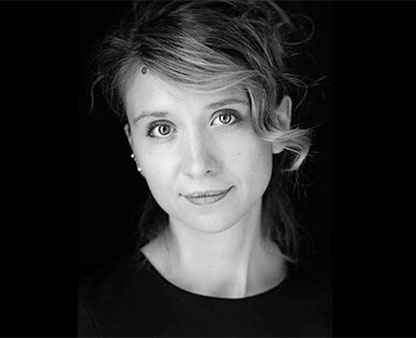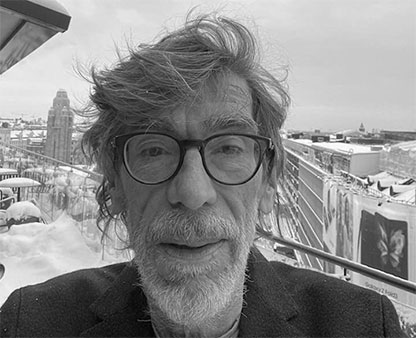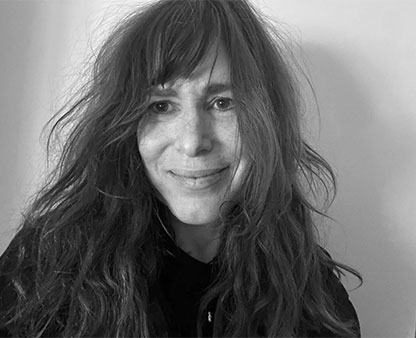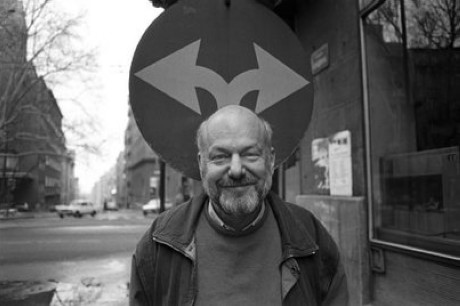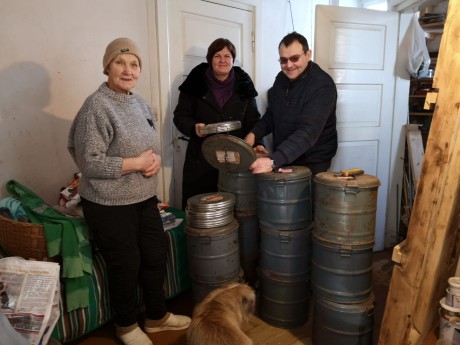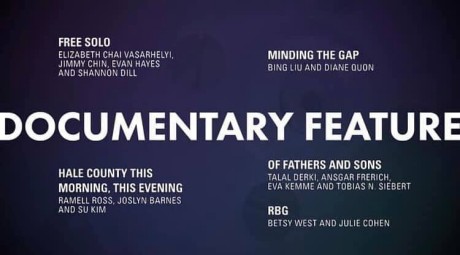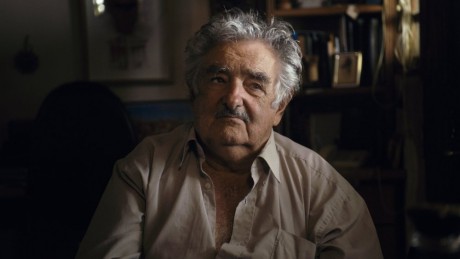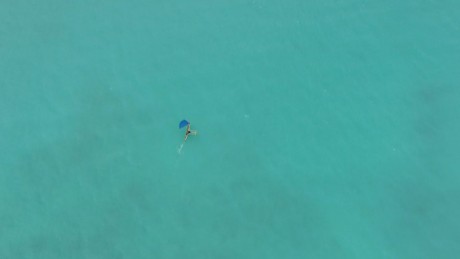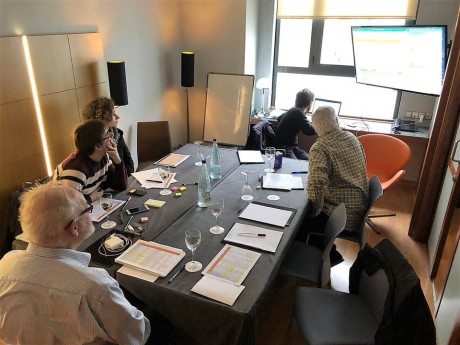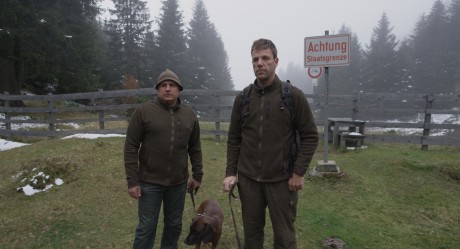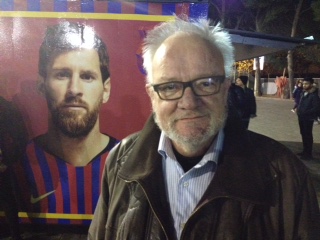DOCS & TALKS 2019 / CINEMATEKET / FRE 01/02 16:45
… Men løsningen er alligevel så let at en femårig kan forstå det. Vi må stoppe udslippene. Det er sort-hvidt. For enten sætter vi gang i en kædereaktion som udløser hændelser, som udløser hændelser, som er ude af menneskets kontrol, eller også gør vi det ikke. (Greta Thunberg i SVT 18. jan. 2019)
GEOGRAFI
Det første jeg overvældet forstår når jeg ser Matthieu Rytz ’ film er staten Kiribatis’, dette øriges skrøbelighed. De indledende optagelser fra højt oppe viser mig det, en spinkel ørække i en lang sekvens. Udsagnet i disse billeder er filmens indhold, som helt enkelt former sig som en uddybning af dette indtryksfulde overblik. Matthieu Rytz vil med det samme gøre klart, hvad den her dokumentar handler om. Skrøbelig og usikker skønhed. Den lille spinkle udriggerbåd på det store hav, det blå sejl og det blå vand og den tynde langstrakte øgruppe to meter over havets overflade på toppen af undersøiske vulkankrateres kanter.
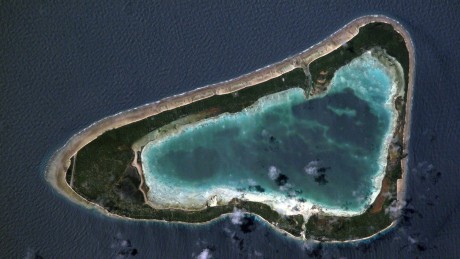
Our whole nation is only two metres above sea level, and the report shows that the difference between 1.5°C and 2°C of warming is several centimetres of sea level rise. Given that we are already feeling the impacts of rising water, every millimetre counts. (Anote Tong, The Guardian, 10 Oct 2018)
KLIMA
Det er en ellers meget lidt drømmende, men derimod yderst realistisk skildring af dette land, dette første offer for klimakatastrofen – sådan vil det komme til at se ud når denne smukke i sig selv afsides hvilende nation går til grunde. Det vil være endnu flere vilde storme der river alt i stykker og vældige vandmasser i gader og huse. Og her i det lave land er der ikke højder og bjerge at flygte til, lige på den anden side er vandet også, lagunens vandstand stiger også. Klimakatastrofen er ikke noget som kommer engang, klimakatastrofen er noget som er nu. Stormene og havstigningerne er der – men måske vil en begyndelse for nogle af os i biografen ikke mærkes, før hændelserne snart vokser endnu mere i antal og styrke. I dokumentarprogrammets redegørelse og i vores virkelighed uden for biografen.
FISKERI
To fiskere, en mand og en kvinde røgter deres garn ude i havet. De står som de altid gør, som de al tid gjorde, i vand til brystet. Det er varmt nok, det er tropisk klima, det er på breddegraden 0. Vejret er det samme hver dag, solen bager, havet er azurblåt som spejl af himlen. Manden samler fangsten i en sin kurv mens han løsner dem af garnet. Kvinden tager mens hun tømmer sin del af nettet en af dem i munden og en i hver hånd og så vader hun hen til ham og lægger dem i kurven. De driller hinanden, de pjasker vand på hinden, de er glade. Som var de badegæster. Men de er på arbejde, de er fiskere, de hedder Sermary og Ato og er medvirkende i et visuelt antropologisk værk, og de står ude i havet som er en vældig del af deres land, en forudsætning for livet i deres lokale samfund, en af Kiribatis 35 øer som ligger lavt i havet fordelt i en række hen over Ækvator.
I en følgende scene sidder de to ved siden af hinanden på land og renser fiskene, det her er deres erhverv, så derefter kommer vel transporten til markedet og den fine lille udriggerbåd med det blå sejl er inde i billedet i dag som den har været det i måske hundrede år eller meget mere tænker jeg.
LANDBRUG
De er også landmænd, i en følgende scene klatres der i pakmer, der flækkes kokosnødder, der produceres kokosmel og kokosmælk men, forstår jeg, mindre og mindre…
Sea level rise is turning our freshwater resources salty, rendering the land unable to grow staple crops such as coconut and taro, and eating away our shoreline. (Anote Tong, ibid)
KULTUR
Jeg kigger på boligerne, på den ærværdigt sikre og beskedne arkitektur, denne selvfølgelige respekt for æstetikbogens kapitel 1 Om Stedets Ånd, som jeg læser i de fotografiske optagelser, som således også må være Matthieu Rytz’ udgangspunkt for sin politisk moralske pamflet: de er ved at miste deres venligt lave land, de smukke havhuse, de dejlige fiskerbåde med farvede segl…
We are being told that we may have to abandon our islands, the places where our ancestors have been buried, where our children have a home and an identity. (Anote Tong, ibid.)
PRÆSIDENTEN
Fiskeren i en senere scene er Anote, han står i havet som jo er en vældig del af hans land, hvis præsident han var. Nu dykker han ned og fanger fisk med de bare hænder, nu er han både fisker i t-shirt og shorts og international klimaaktivist i jakkesæt, hvid skjorte og slips. Han tabte seneste præsidentvalg og han fisker igen og vold mod havet. Han fascinerer mig med det samme for det er flot og prægnant hvad han siger, det ser jeg også i hans skriftsprog som fortsat statsmand og aktivist i en artikel han har skrevet i The Guardian, som jeg så lige nu og her bringer citater fra…
If this disastrous outcome comes to pass, my people will need a place of safety to move to. Rather than be regarded as “climate refugees” – a term that has no definition or status in the international legal system – I seek migration with dignity for my people. (Anote Tong, ibid.)
SYNOPSIS
What happens when your nation is swallowed by the sea? With the harsh realities of climate change looming, the low-lying Pacific nation Kiribati must find a new solution for the survival of its people. With sweeping cinematography, Anote’s Ark interweaves two poignant stories. Anote Tong, endearing president of the island, races to find options—advocating in international climate negotiations and even investigating building underwater cities. At the same time, warm and sharp-witted Sermary, a young mother of six, tackles every struggle with humour. She must decide whether to leave the only culture she knows on the island and migrate to a new life in New Zealand.
First-time filmmaker Matthieu Rytz sharply captures the next evolution in the shifting dynamics of climate change—one where borders, technology, and global treaties are urgent and can change daily life as we know it. This portrait of the Kiribati people exudes strength of character and grace as they confront the inevitable change they are facing head-on. (Docs & Talks, ed.)
Matthieu Rytz, 2018 / eng. tekst / 77 min. / 140 min. inkl. debate
EVENT
How do we mitigate the consequences of the climate changes that we will have to live with and adapt to? This will be discussed by PhD Lily Lindegaard, who has researched climate adaptation and climate mobility in Vietnam, and former Emergency Managing Director of the UN in the Pacific, Sune Gudnitz. The debate is in English.
LINKS
https://www.dfi.dk/cinemateket/biograf/filmserier/serie/docs-talks-2019(Program og billetter)
www.theguardian.com (Anote Tong)
SVT Skavlan talk show (Greta Thunberg)
https://www.radionz.co.nz/international/pacific-news/360980/kiribati-criticism-of-anote-s-ark-political-film-director (Matthieu Rytz)
www.kristeligt-dagblad/debatindlæg (Jens Morten Hansen)
